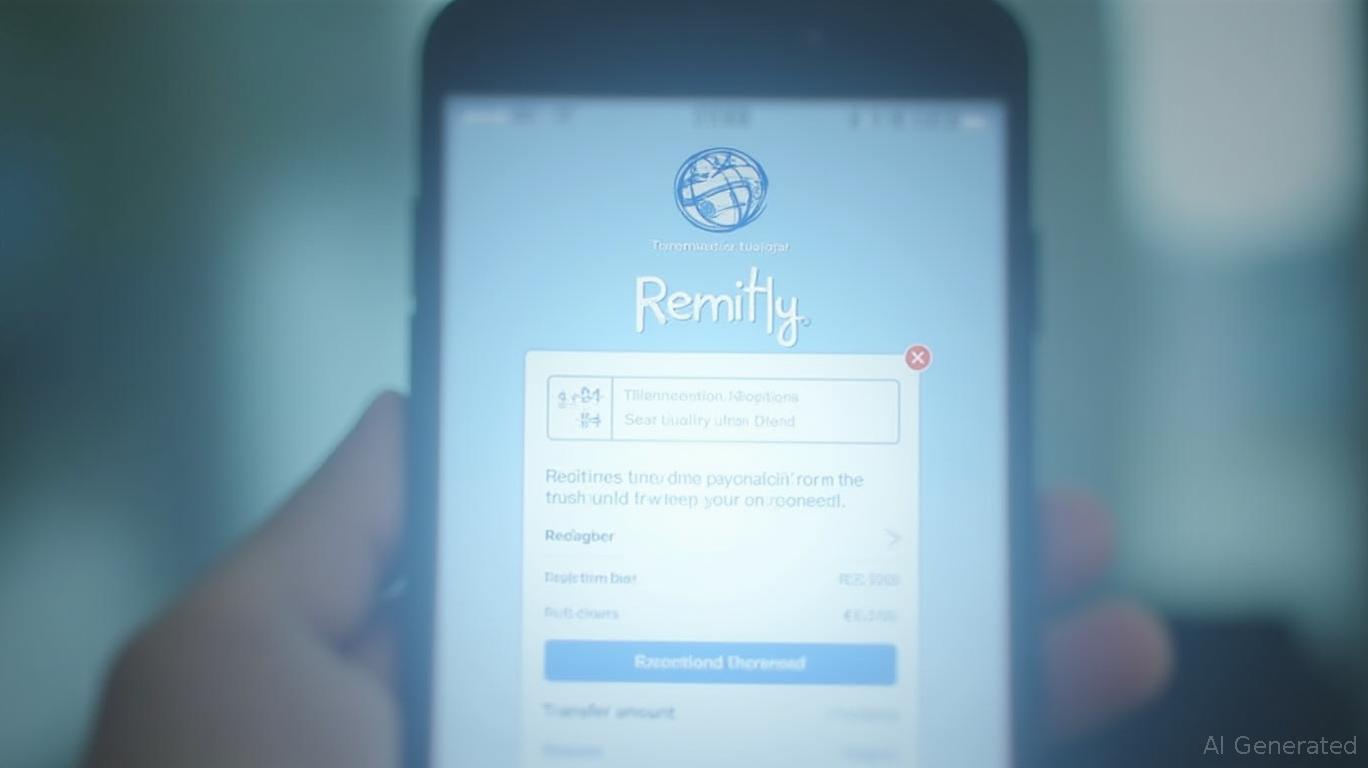Remitly's Regulatory Relief Rally: Why RELY's Stock Surge Points to a Compelling Buy
Remitly Global (NASDAQ: RELY) saw its stock surge 5.7% on June 6, 2025, fueled by Senate revisions to the "Big, Beautiful Bill" (OBBB) that eased regulatory burdens on remittance companies. This legislative tailwind, combined with strong Q1 results and a digital-first growth strategy, positions Remitly as a standout play in the $800 billion global remittance market. While risks like policy uncertainty and insider sales linger, the positives suggest this is a compelling buy for investors betting on digital financial services.

Regulatory Relief: The Senate's Hidden Gift to Remitly
The Senate's tweaks to the OBBB, compared to the House version, are a game-changer for remittance firms. While the House had proposed a 3.5% excise tax on remittances—a move that would have disproportionately hurt non-citizen senders—the Senate's revised bill retains the $10,000 state and local tax (SALT) deduction cap and softens rules around passthrough entity tax (PTET) deductions for businesses. These changes reduce compliance costs and avoid penalizing remittance providers like Remitly, which rely on complex tax structures for cross-border operations.
Crucially, the Senate's anti-conduit rules (to prevent tax avoidance) are less onerous for digital platforms like Remitly, which already require users to have bank accounts. This verification step aligns with the bill's intent to curb evasion, making Remitly's model a compliance-friendly outlier.
Q1 Results: Growth Machine Firing on All Cylinders
Remitly's Q1 2025 earnings underscore its operational resilience:
- Revenue surged 34% YoY to $361.6 million, driven by a 28% increase in transaction volume and a 5% rise in average fees.
- Adjusted EBITDA margins expanded to 16.2%, up from 13.5% in Q1 2024, reflecting cost discipline and scale.
- GAAP net income hit $0.05 per share, marking its first profitable quarter since its 2021 IPO.
Management also raised guidance, projecting 24-25% revenue growth for 2025 and a 150 basis point EBITDA margin expansion. With 34% of revenue now coming from non-U.S. markets (up from 28% a year ago), Remitly is diversifying its geographic exposure—a critical hedge against U.S. policy risks.
Competitive Advantages: Why Remitly Wins in the Digital Shift
Remitly's edge lies in its AI-driven platform, which automates FX pricing, reduces settlement times, and integrates with fintech partners like Wise and PayPal. This contrasts sharply with legacy players like Western Union (WU), which still rely on cash-heavy kiosks. Key strengths:
1. Bank Account Requirement: Forces users into formal financial systems, reducing fraud and compliance costs.
2. Cross-Border Partnerships: Partnerships with banks in Mexico, India, and the Philippines provide direct access to unbanked populations.
3. Geographic Diversification: Expanding into Southeast Asia and Africa, where remittance demand is surging.
Analysts at Barclays and BMO now see RELY's fair value at $28–$32, implying 40–60% upside from current levels.
Risks to Consider
- Policy Uncertainty: The excise tax debate isn't dead—the Senate could still reinstate it at 5%, which would hurt non-citizen senders. However, the House's version was overly broad (e.g., taxing tourists), making compromise likely.
- Insider Sales: Executives sold $15 million of shares in Q1, signaling potential near-term volatility.
- Macroeconomic Headwinds: A U.S. recession or stricter immigration policies could slow remittance volumes.
Why the Bull Case Outweighs Risks
- Structural Tailwinds: The global remittance market is projected to grow at 4–5% annually through 2028, driven by digital adoption (now 45% of all transfers). Remitly's platform is positioned to capture this shift.
- Valuation Discount: At $20/share, RELY trades at just 5x 2025 revenue estimates, a discount to peers like Wise (10x sales) despite its faster growth.
- Regulatory Momentum: The Senate's focus on tax permanence and SALT caps signals a shift toward business-friendly policies, reducing the likelihood of punitive measures.
Investment Thesis
Remitly is a buy for investors with a 12–18 month horizon, targeting a $28–$30 price target. While near-term risks like insider selling and policy debates could cause dips, the long-term thesis hinges on three pillars:
1. Digital dominance: Remitly's tech stack and partnerships will widen its lead over incumbents.
2. Regulatory clarity: The Senate's revisions reduce immediate threats, giving management room to execute.
3. Global expansion: Emerging markets' remittance demand is underpenetrated, offering years of growth.
Final Take: The June 6 surge wasn't a fluke—it was a market nod to Remitly's ability to thrive in a shifting regulatory landscape. For investors willing to look past short-term noise, RELY offers asymmetric upside in the booming digital finance space.

Comments
No comments yet